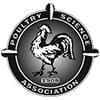Avoiding egg allergies through more consistent labeling - Interpretive Summary
Published: January 9, 2023
By: https://poultryscience.org/
by Sam Shafer
Products from spent fowl pose a risk to egg-allergic consumers
How common are egg proteins in poultry products, such as chicken breast, thighs and legs? For most people, this concern never comes up. But for people with egg allergies, the presence of egg proteins in poultry is a serious issue.
Now a new study published in Poultry Science® reveals how common egg proteins are in spent fowl product (from hens at the end of their egg-laying period) and offers a few possible solutions. The research team from Laval University, Québec, found that raw pieces of spent fowl were “highly contaminated” with egg proteins, suggesting that egg protein concentrations have been underestimated until now.
“Since the reproductive system of hens is likely to contain eggs before the animals are sent to the slaughterhouses, they could represent a source of unintentional egg proteins,” write study authors Théolier et al. “In this case, the need to communicate this risk, if applicable, to consumers through PAL [precautionary allergen labeling] should be investigated.”
Eggs are a relatively common allergen. As the study authors note, egg protein allergies among the Canadian population is estimated to be around 0.9% overall. Among those with egg allergies, there is a small group that is incredibly sensitive to egg proteins—in fact, a quantity of egg proteins as low as 0.2 mg can trigger an objective allergic reaction in 1% of the egg-allergic population. As a result, all products containing eggs among the ingredients must list eggs under specific precautionary allergen labeling.
Yet spent fowl are not usually labeled as containing egg proteins, since the egg proteins are not intentionally added, and because the proteins were assumed to be rare.
For the new study, the researchers found that every piece of raw spent fowl tested was positive for egg proteins. They also uncovered an interesting trend: the equipment used for processing carcasses built up egg proteins over time. After just a few minutes of processing, they could actually see egg residues on working surfaces and conveyors. The carcass chilling water quickly turned into an egg protein bath. The water was contaminated within 20 minutes of processing and egg proteins increased steadily near the entrance of the chiller. At one point, the researchers found contamination of 73.4 mg egg proteins/kg in the chilling water.
“Once egg proteins were detected in a tank, all the following samples tested positive for egg proteins,” write the study authors.
The researchers also tested specific products and processed products for egg proteins. Interestingly, processed products such as burgers, bologna, cooked roast, frankfurters, nuggets and wieners had lower egg protein concentrations than mechanically separated meats. All of these processed products already contained a PAL saying “may contain meat.”
“Higher contamination was observed in hen pieces with skin, notably wings,” write the study authors. The researchers point out that since chicken wings tend to be eaten in batches, they may also pose a higher risk to egg-allergic consumers, compared with hen breasts or whole birds.
No matter the product, there appears to be some risk to egg-allergic consumers. “Analytical results (191/191 food products tested contained egg proteins) suggest that egg contamination is not controlled, and the use of PAL should be consistent in products containing spent fowl,” conclude the scientists.
What does this study mean for producers?
- Swabbing appears to be a satisfactory method for collecting samples for egg protein analysis.
- Egg proteins are much more common than previous estimates suggested.
- It may be important that all products derived from spent fowl include a PAL for eggs.
The full paper, titled “Spent fowl as a source of unintentional egg proteins exposure in Canadian food products,” can be found in Poultry Science® and online here.
DOI: 10.1016/j.psj.2022.102003
Source
https://poultryscience.org/Related topics:
Authors:

Recommend
Comment
Share

Would you like to discuss another topic? Create a new post to engage with experts in the community.



